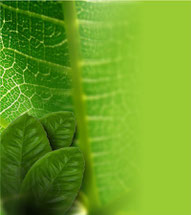
Topic III: Macromorphological characteristics of vegetative organs
Seed
What is the seed?

The seed is the embryo of the mature plant.
The seed is surrounded by a hard, tough layer called testa.
In some cases, the seed can germinate and develop into a healthy organism, only a few days after come off the tree.
Others seeds retain viability for years, e.g., the oriental lotus seeds are able to conserve their germination 3,000 years after their dispersion.
Each species of plant has a natural period of viability, the seeds planted after the optimum period of viability can produce weak plants or not germinate.
People sometimes confuse the lack of viability of a seed with the rest period of the plant.
Indeed, many seeds need to pass through a resting phase after being detached from the plant, before being able to germinate and develop into new plants.
Moreover, there are seeds provided of a very hard outer shell which must be soften in the water and rot, for the water and oxygen can reach the seed and intervene in the
development of the embryo or it breaks the outer shell.
Seed germination
Germination is the process by which embryonic growth resumed after the resting phase.
This phenomenon is not triggered until the seed has been conveyed to a favorable environment for any of the dispersal agents.
Determining environmental conditions are: sufficient supply of oxygen and water and proper temperature.
Each species prefers to germinate a given temperature, in general, extreme cold or heat does not favor germination.
Some seeds also need a certain time of exposure to light to initiate germination.
During germination, the water spreads through the seed casings and reaches the embryo, during the resting phase is dried up almost completely. The water causes the
seed to swell, sometimes to the point of tearing the outer casing.
The oxygen absorbed by the seed provides the energy necessary to initiate the growth.
The radicle is the first embryonic element springing through the seed casing. It forms hairs that absorbing water and holding down the embryo to the ground. Then it begins to
elongate toward the ground surface.
Cotyledons emerging to the light form chlorophyll and perform the photosynthesis until true leaves develop.
From the beginning of germination until the plant attains full independence of nutrients stored in the seed, the plant is called a seedling.

 Pharmacognosy´s topics - Medicinal plants
Pharmacognosy´s topics - Medicinal plants


Write a comment